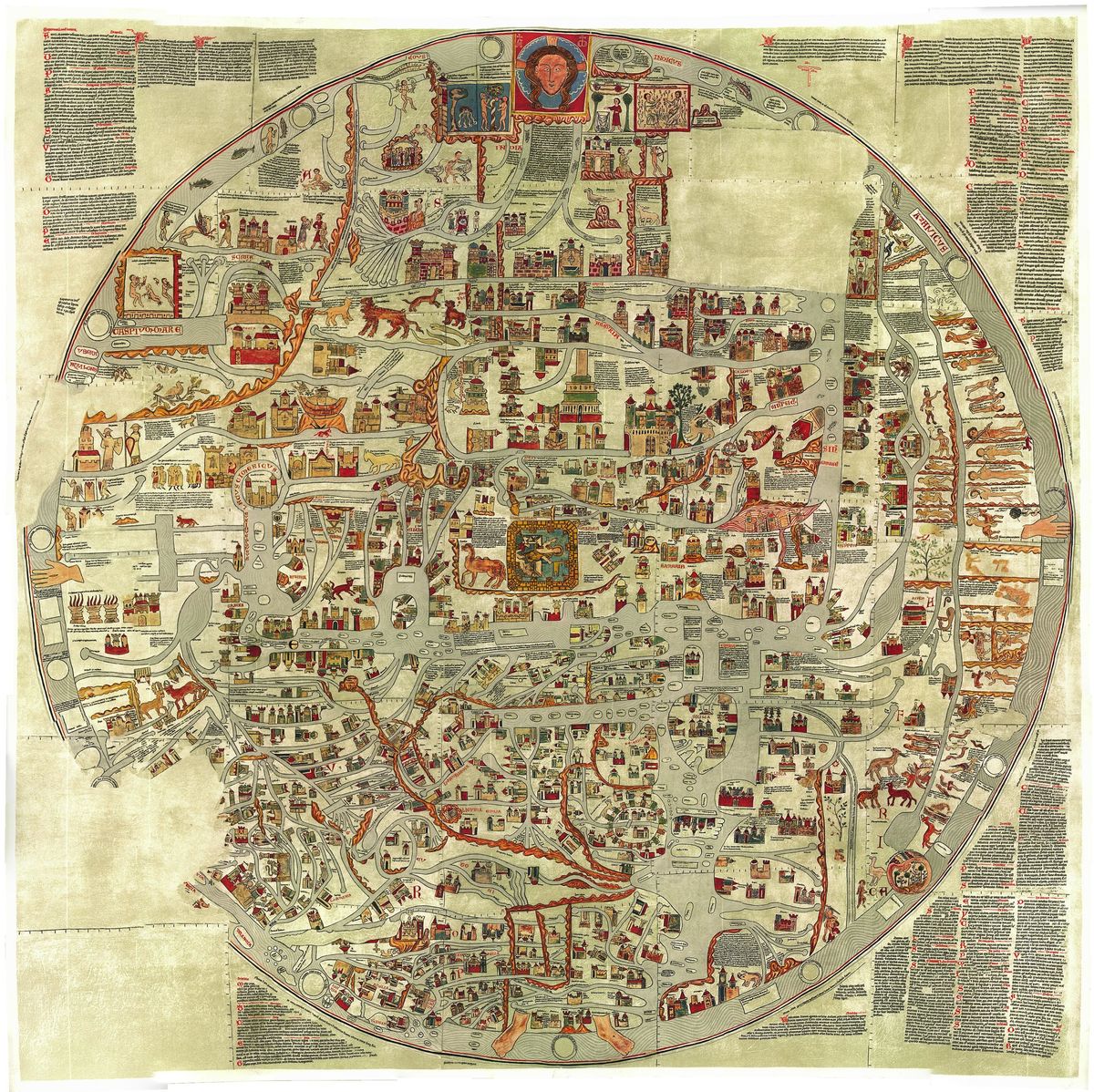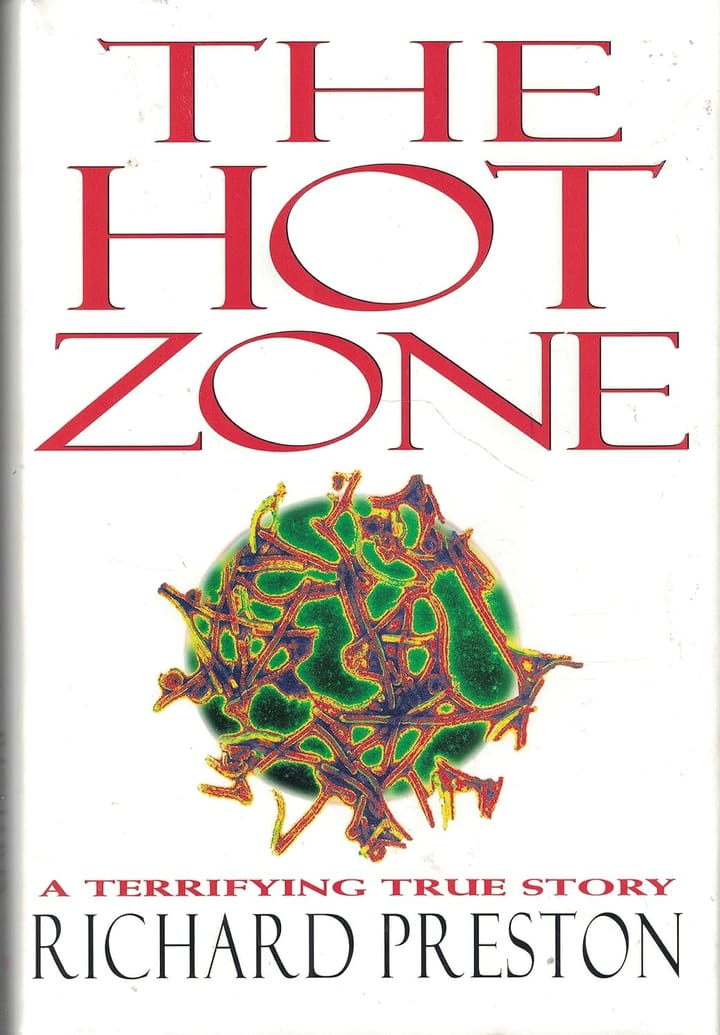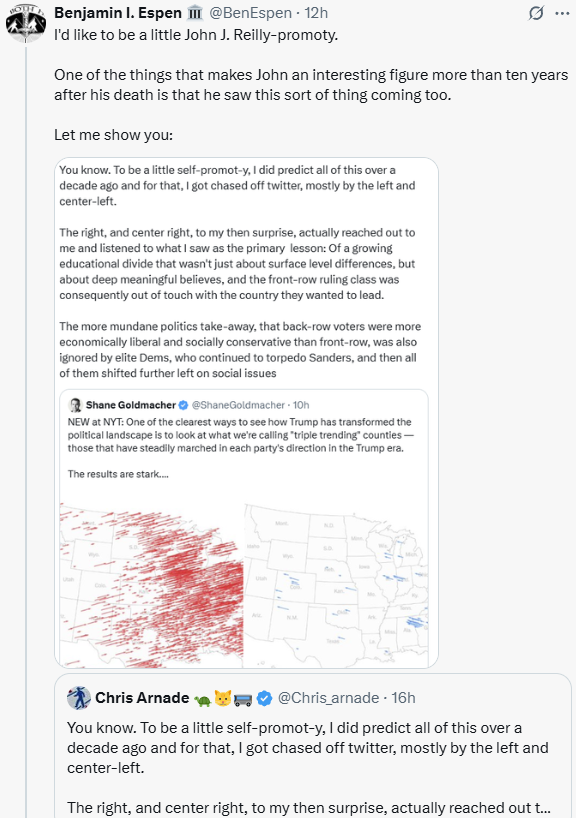The Long View: Anatomy of Criticism

As a believer that great works of synthesis are the characteristic work of our age, I support this kind of book.
Anatomy of Criticism
By Northrop Frye
Foreword by Harold Bloom
Princeton University Press, 1957
(Paperback 1990)
383 Pages, $17.95
ISBN 0691069999
A review of this book really should not be a text. It should be a diagram of a landscape, like a medieval mappa mundi, or maybe like one of those intricate cosmological charts that brilliant schizophrenics sometimes produce. The subject is the whole of literature, a continent whose shores are the boundary between imagination and experience, and whose countries are marked by the undefended frontiers between comedy, tragedy, masque, romance, the novel, the lyric, and every form and type of recorded use of imaginative language. The book was written just before the rise of postmodernism, at almost the last moment when a serious critical study could aspire to tell readers how the whole world is, rather than how it isn't. The book is dense, therefore, but it is not malicious.
Northrop Frye (1912-1991) needs no introduction, but that consideration has never yet stopped a reviewer. Frye was the Canadian academic magus who was not Marshall McLuhan, who was his colleague at the University of Toronto, but reportedly not his friend. In the 1960s, both achieved worldwide reputations. McLuhan's theme was the emergence of universal consciousness in a world mediated by audio-visual technology. Frye's project was ahistorical, and far more ambitious: to grasp the whole world of story. He seems to have spent the rest of his long career unpacking the details of the vision he synthesized in Anatomy of Criticism.
One should note that Frye's reach exceeded his grasp. Though he sought a universal synthesis, Anatomy of Criticism is chiefly about English literature, beginning with Shakespeare. The literatures of the Classical world are consulted for parallel historical development; the Christian Bible is searched for themes and structures. (Frye himself was an ordained Methodist minister.) European writers are conflated with their anglophone contemporaries. There are a few references to Hindu literature, and fewer to anthropology.
Frye's project is to identify and classify the archetypes of literature. These include the sort of things that Jung and Joseph Campbell have taught us to identify as archetypes. We are suitably instructed in the various incarnations of the hero's Quest, for instance, though Frye points out that Jung's idea of a collective unconscious is an unnecessary hypothesis for literature. Most of Frye's form analysis is technical but illuminating, such as the observation that the clever slaves in the comedies of Plautus and Terence are structurally equivalent to the subversive villains of drama, such as Iago. Other analyses are broad and illuminating: if I understand correctly, for instance, he suggests that the whole Bible is a comedy. In any case, particular observations of this sort culminate in glimpses of the Platonic Forms, Greek vocabulary and all:
The four mythoi that we are dealing with, comedy, romance, tragedy, and irony, may now be seen as four aspects of a central unifying myth. Agon or conflict is the basis or archetypical theme of romance, the radical of romance being a sequence of marvelous adventures. Pathos or catastrophe, whether in triumph or in defeat, is the archetypal theme of tragedy. Sparagmos, or the sense that heroism and effective action are absent, disorganized or foredoomed to defeat, and that confusion and anarchy reign over the world, is the archetypal theme of irony and satire. Anagnorisis, or recognition of a newborn society rising in triumph around a still somewhat mysterious hero and his bride, is the archetypal theme of comedy.
Anatomy of Criticism would not be so notable if it were a static taxonomy. It is more like a phase space, a model that describes every possible state of the system through time. The key to that is Frye's five “modes” of fiction, with each mode defined by the power of the hero. Here they are, in their proper order, which also happens to be a brief outline of the development of literary forms in the modern West since the Dark Ages, and of the ancient West in the previous cycle:
---In the mode of myth, the hero is superior in kind to other men and the environment of other men. These stories in which the hero is a divine being are important for literature, but generally fall outside the normal literary categories.
---In a romance, the hero is superior in degree to other men and to the environment, but is simply an extraordinary human being. The laws of nature in romances are often not those that we meet in the real world, but they are self-consistent once they are established.
---The high mimetic mode obtains when the hero is superior in degree to other men, but not to the environment. This is the kind of hero Aristotle principally had in mind: the leader whom we find in most epic and tragedy.
---The low mimetic mode treats of a hero who is no better than the rest of us, which we find in most comedy and realistic fiction. We respond to the hero's common humanity in this sort of fiction. The story must display the canons of probability that we use in ordinary experience.
---When the hero has less power or intelligence than ourselves, so that the scene is one of bondage, absurdity, or frustration, the mode is ironic.
Frye tells us that irony, pushed to extremes, returns to the mode of myth. Characters who are so constrained by circumstances that they fall below the level of common humanity become hard to distinguish from the superhumans of myth: both kinds of stories enact archetypal patterns that do not turn on ordinary questions of personality or motivation. Frye's chief example of this return to myth is Finnegan's Wake, but we also see it in the low mimetic mode, particularly in science fiction.
This notion of the “recursion” of historical cycles is familiar from Vico. It is even more familiar from Spengler, whose ideas Frye assumed and fought against throughout his career. Since I have a rather similar relationship with Spengler's model of history, I have no trouble understanding what Frye is trying to say in statements like this:
Participation mystique is essentially spasmodic: in primitive communities it may be sustained for hours by dance, and in decadent ones, by oratory, but in a state of culture it falls into the background
"Culture," of course, in Spengler's parlance, means roughly the period from the end of the Middle Ages to the beginning of the 19th century. After that, we began to see the return of Mass Man that McLuhan was so keen to tell us about. Frye continued to work for several decades after Anatomy of Criticism, and this is by no means the favorite work of all of Frye's admirers. Still, I cannot help but wonder whether, in this book, he was attempting to create one of the great summa that Spengler predicted would be the glory of the final stage of the Western intellect.
This is not to say that this work is predominantly Spenglerian. A lesser critic could have used Frye's system of modes to tell a tale of decline and fall from the primordial age of faith to the 20th century's kali yuga of irony and nihilism. Frye, in contrast, points out that elements of each mode are present in every age. In fact, at every point he reminds us that his system does not judge the quality of any piece of literature; the system simply assigns a work to its proper place in the structure of literature. He will, in fact, have nothing to do with a theory of criticism that praises or disparages a work because of its consonance with the classics of the past, or because it is supposed to reflect the state of things in a brighter future. Such questions are part of the history of taste. The confusion of criticism with taste detracts from the total sum of human knowledge.
In Frye's model of literature, it is impossible to produce a form of work that is original in the sense of “new.” Even the most self-consciously avant guard artist will employ ancient archetypes and structures, however obscurely. Actually, Frye suggests, those authors whom we treasure for their originality were really original in quite a different sense: they returned to the archetypal origins for their stories, and thus often cut through the accretions and refinements with which their contemporaries were familiar. Frye explains that even the greatest author is not the greatest expert on his own work for the purposes of criticism. The critic discerns the form and phase of the work; the work's author is not necessarily equipped to do that.
Some of Frye's ideas remain stunning. In the next two generations, however, notions very much like his ideas led to the demoralizing relativism in academic life from which we have not yet recovered. As an aside, I must also point out that Frye's notion of “primordial originality” sounds much like the principle of “resourcement” that gained currency in the Catholic Church during the Second Vatican Council a few years later. This was the idea that the way to reform was to “return to sources,” particularly to the Fathers of the Church and to historical reconstructions of the earliest forms of liturgy. In practice, the attempts to carry out this program often had unfortunate results.
Be that as it may, the final impression I took away from this book was its encyclopedic scope. Actually, it goes beyond encyclopedic. I have never seen an encyclopedia that covered this aspect of rhetoric:
In English we have Burton, who is said to have amused himself by going down to the Isis and listening to the bargemen swear. Perhaps his visits were professional, for the qualities of his style are essentially the qualities of good swearing: a swinging sense of rhythm, a love of invective and catalogue, an unlimited vocabulary, a tendency to think in short and accentual units, and an encyclopedic knowledge of the two subjects relevant to swearing, theology and personal hygiene. All of these except the last are musical characteristics.
The book says quite a lot about music, too.
Copyright © 2004 by John J. Reilly

Anatomy of Criticism: Four Essays By Northrop Frye



Comments ()